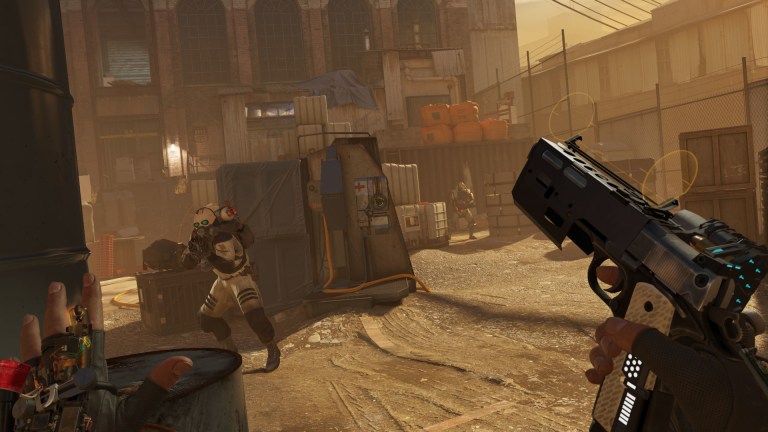Why Half-Life 3 Hasn’t Happened
It seems that everything from technical issues to bad ideas kept us from playing Half-Life 3.

In an interview with IGN, veteran Valve level designer Dario Casali spoke about why the company never released Half-Life 3 or Half-Life 2: Episode 3. As we’ve heard in the past regarding one of gaming’s most famous non-existent sequels, the basic answer is “it’s complicated.”
However, Casali at least offered quite a lot to say on the subject beginning with the problems posed by Valve’s intended episodic format for the series.
“After working on Half-Life 2 for six years we decided we didn’t want to go dark for so long,” Casali says with an understanding of the irony of his statement. “That’s why we started doing the episodes where we thought, ‘Well, we have the stable technology now. We understand the characters, we understand the story, we have most of the mechanics. Let’s just bite off little chunks and then release more often. We think players are going to prefer that from waiting six years and going through however many delays we went through.’”
Casali notes that at one point, Valve thought they could release a new Half-Life story every year via the episodic format. When Half-Life 2: Episode Two actually took two years to develop, the team quickly realized that they were suffering from what Casali refers to as scope creep.
“We found ourselves creeping ever forward towards, ‘Well, let’s just keeping putting more and more, and more, and more stuff in this game because we want to make it as good as we can,’” Casali says. “I think at that point we realized, ‘Okay, maybe this episodes thing, it was a good concept, but we’re not executing terribly well as far as getting things out quickly enough’…and then we realized these episodes are turning more into sequels.”
From there, a couple more complications emerged. The first involved the lengthy development of the Source 2 engine and how the number of resources that process required just made the idea of developing a new Half-Life title that much more challenging. The second was the fact that Valve simply didn’t think it was wise to release a Half-Life game that they didn’t feel entirely confident in.
“We were never really that happy with what we came up with,” Casali explains. “Half-Life games are supposed to solve interesting problems. [Valve doesn’t] crank Half-Life titles out because it helps us make the quarterly numbers…Our judge and jury is always the playtesting. It never comes from us. It always comes from somebody outside. And they always tell us how we’re doing.”
Pretty much everything Casali says matches up with what we’ve heard regarding Half-Life 3 before. At this point, we can safely say that Half-Life 3 didn’t happen due to the development of the Source 2 engine, other time constraints, and because Valve never really found an idea they were happy with during that time. While it’s certainly likely that the incredible success of Steam hindered their motivation to make another Half-Life game, it genuinely doesn’t sound like that was the main factor. For what it’s worth, we least know what Half-Life 3 would have seemingly been about had it been made once upon a time.
With the release of Half-Life: Alyx, it finally seems that Valve has found the technology and concepts that inspire them to further the franchise. Whether or not they continue to make Half-Life games (and if they will be Half-Life VR games) remains to be seen.
